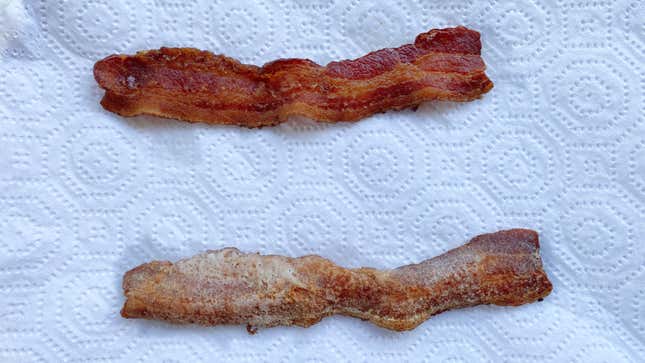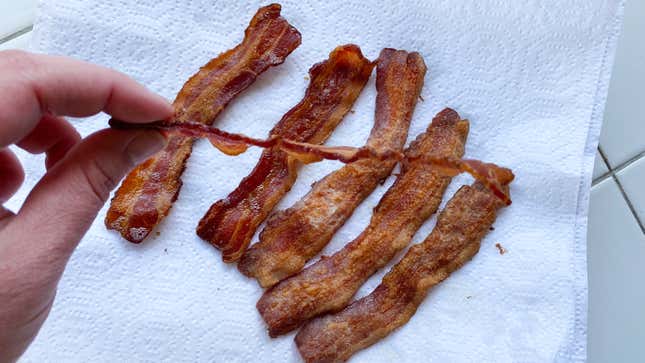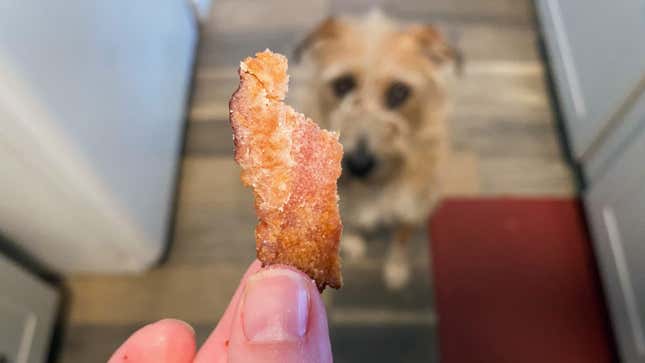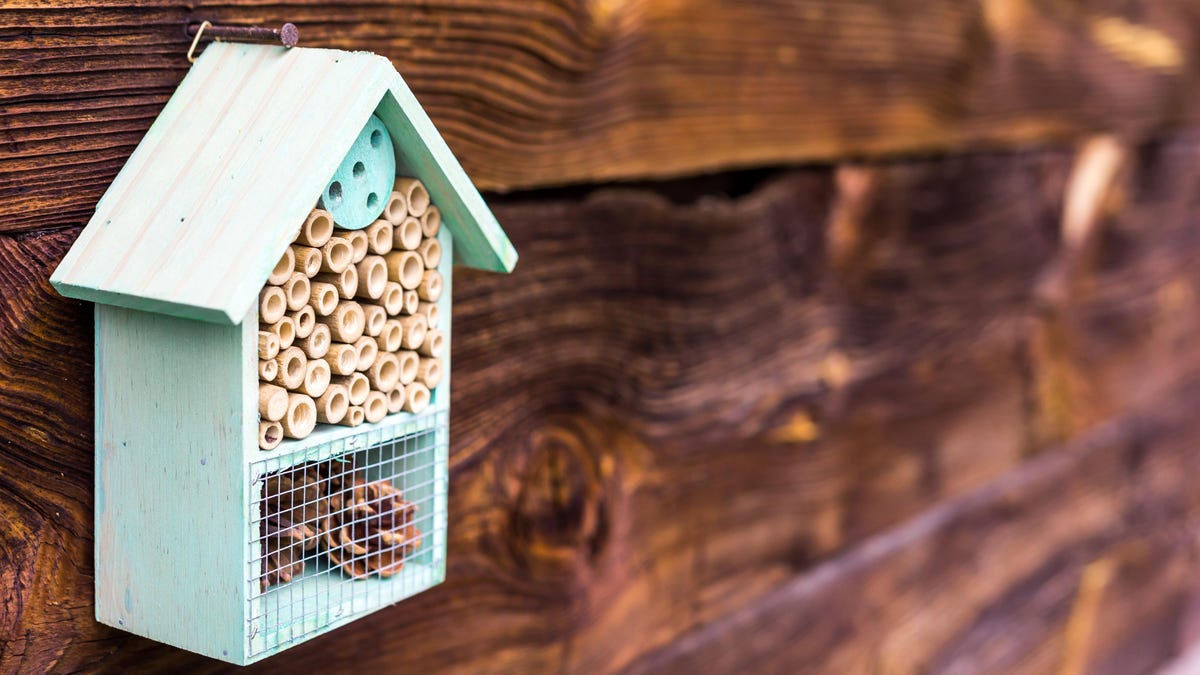I Tried the Viral TikTok Flour Bacon Hack and It Sucked
Somedays I feel deeply disconnected from the “food content” traveling across social media, almost to the point of doubting my own powers of perception. Yesterday was such a day. On Facebook, I saw people coo over an obviously mealy,...

Somedays I feel deeply disconnected from the “food content” traveling across social media, almost to the point of doubting my own powers of perception. Yesterday was such a day. On Facebook, I saw people coo over an obviously mealy, pale tomato before watching a woman store fresh blueberries and hard boiled eggs in the same airtight container. Then I tried a well-reviewed, popular TikTok bacon hack, and I was ready to sue the world.
Proponents of the hack claim dusting bacon with flour before baking it “absorbs some of the extra grease, which helps the strips hold their shape,” and that it “prevents the bacon from curling up on itself, resulting in an extra-crispy texture without sacrificing the juiciness.”
This seemed fake to me—like a solution in search of a problem, especially since I’ve never had an issue with my bacon curling in the oven (but more on that in a bit). I was unclear on how coating bacon in a grease-absorbing powder would help it maintain crispiness, as it would naturally result in the grease hanging out on surface of the meat, rather than dripping away.
I opened a package of recently purchased bacon and set up a side by side comparison with four floured strips (cooked on top of parchment, as suggested by the review I read), and four un-floured strips (cooked on top of foil, as is my custom).
I set my sheet pan of bacon in a cold oven, then set it to 400℉ and let it bake for about half an hour, only five minutes longer than it took the oven to reach its target temperature.
How much flour is too much flour?

Photo: Claire Lower
Haters will say I purposely tanked the test by loading the bacon up with too much flour, but I was just following directions. According to TheKitchn’s review, I should “believe in the power of flour,” and “more flour equals more crispy juicy goodness.” Instead of sprinkling it on in clumps, I dusted each strip using a fine mesh sieve, which resulted in a finer, more even application.
This was too much flour, but any flour is probably too much flour. Even the lightly floured portions had a duller flavor and gummier texture than the naked bacon. Nothing about the experience made me want to try it again with less flour, mostly because the un-floured bacon was pretty much perfect.
The un-floured bacon was crispier, and just as flat

Photo: Claire Lower
The piece of bacon I’m holding in my hand in the above photo was not floured. And yet it laid just as flat as the floured bacon. It was also crispier. The bacon that had been dusted with flour didn’t snap as readily, and was coated with a gummy, dull layer of flour and bacon grease, with turned into a paste in some spots.

Photo: Claire Lower
The flour also dulled the flavor. The un-floured bacon was noticeably saltier, meatier, and smokier, which makes sense because it didn’t have a layer of flavorless flour soaking up its grease to create a flavor-muting paste.
How to make flat, crispy bacon without flour
The secret to flat bacon has nothing to do with grease retention or absorption, but everything to do with temperature. Whether you cook your bacon in a pan or in an oven, a cold start will ensure it cooks evenly and flatly. We’ve discussed this before, but just to re-cap:
Basically, when you toss streaky bacon into a very hot environment, it seizes, curls, and cooks before the fat has any time to render out. This means gummy, not crispy bacon.
Fat needs time to render, and bacon has a lot of fat. When you slowly heat the bacon, it gently renders out, without any seizing, and it is the seizing caused by sudden temperature changes that makes bacon curl.
All you have to do to bake up a big pan of flat and crispy bacon is lay it on a flat surface (such as a common sheet pan) and place it in a cold oven. Set the oven’s temperature to 400℉ and let the bacon gently heat up along with the rising temp of the oven. Even if you start your bacon in a pre-heated oven, it will still bake up pretty flat, without too much curling, as long as you don’t pre-heat the pan. (Air isn’t a very efficient heat conductor, but metal is.) The fat will slowly render out, leaving behind flat, crispy strips of bacon, all without any gimmicks (and certainly without any flour).

 KickT
KickT 























.jpg)








